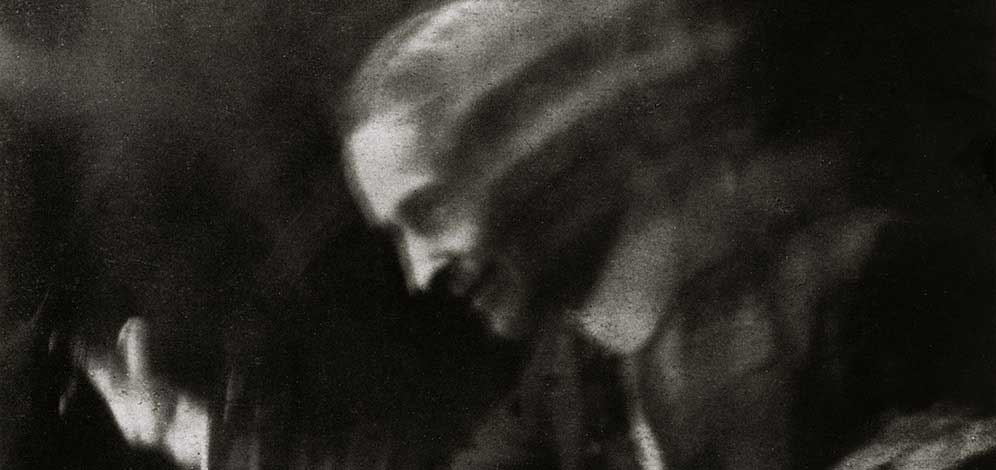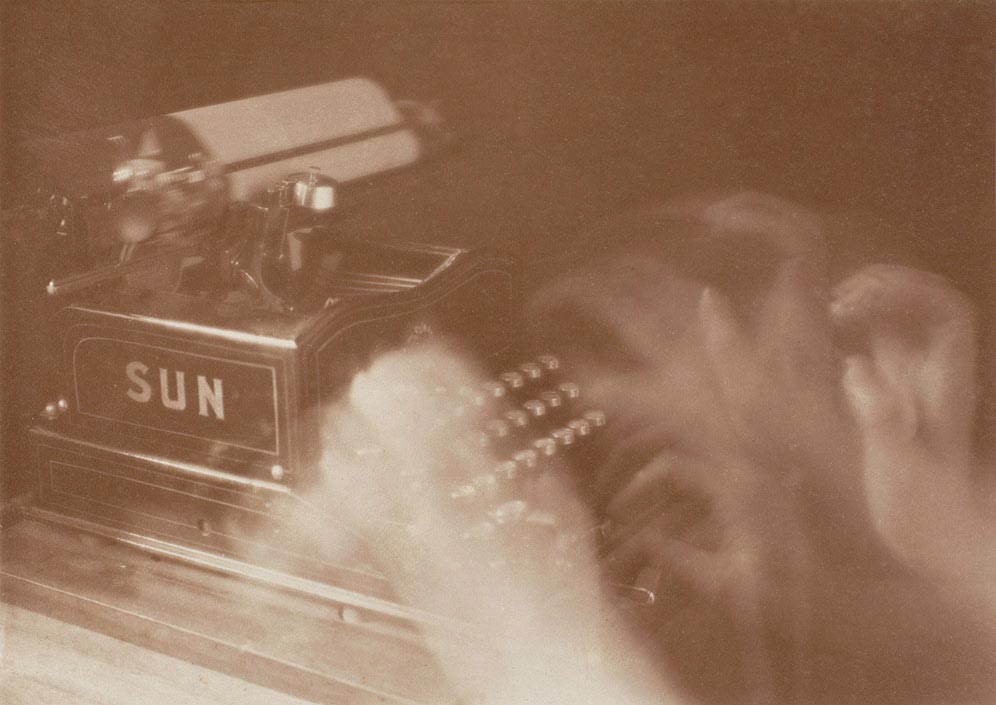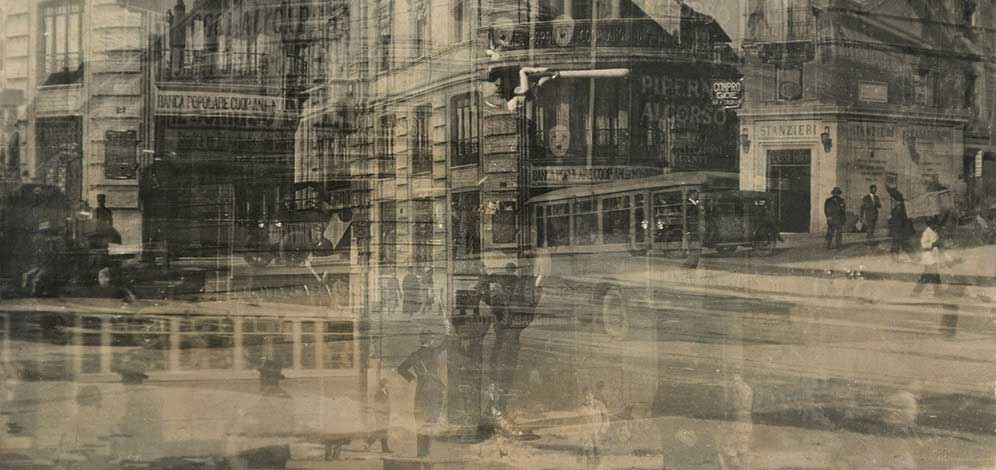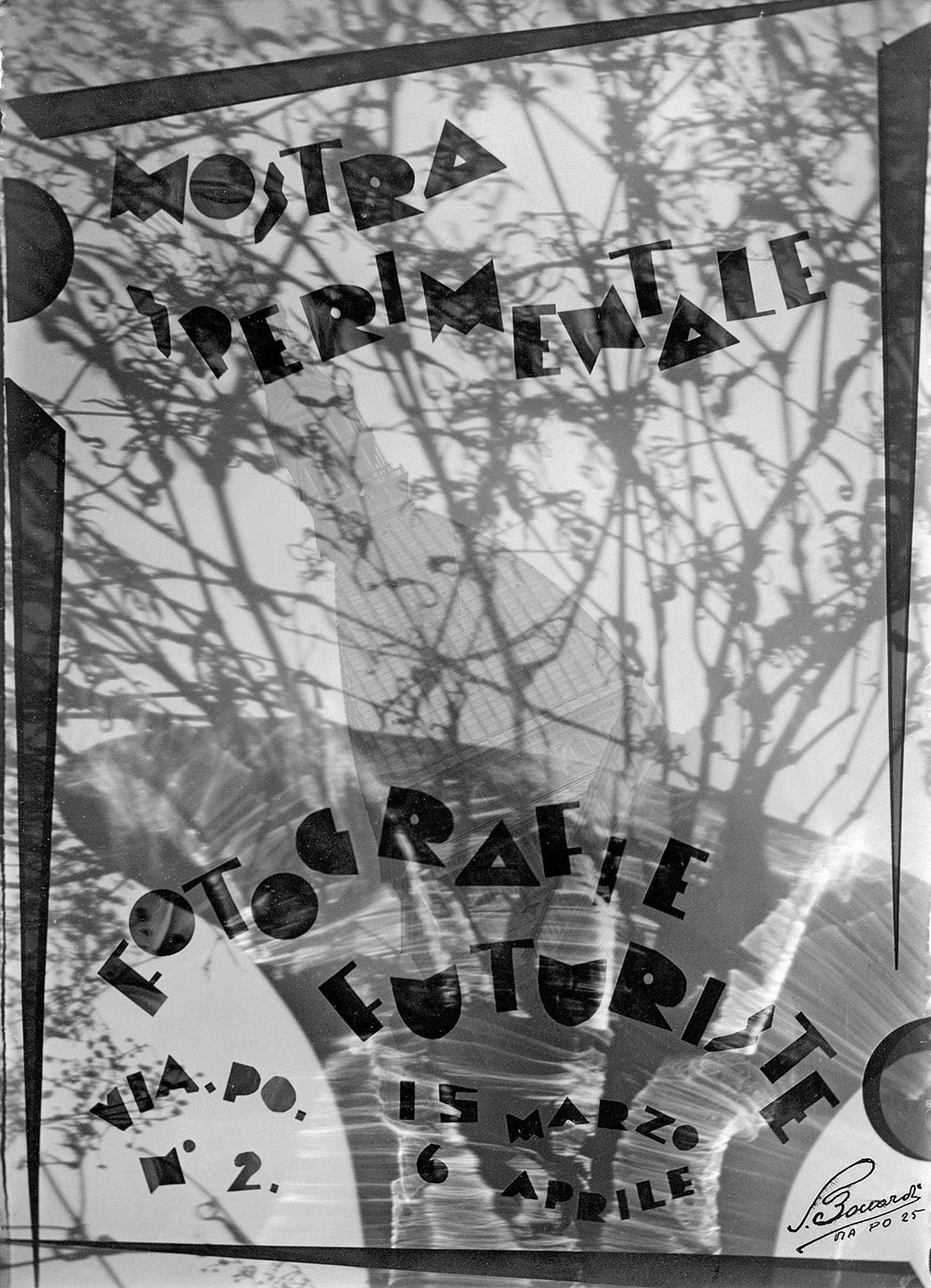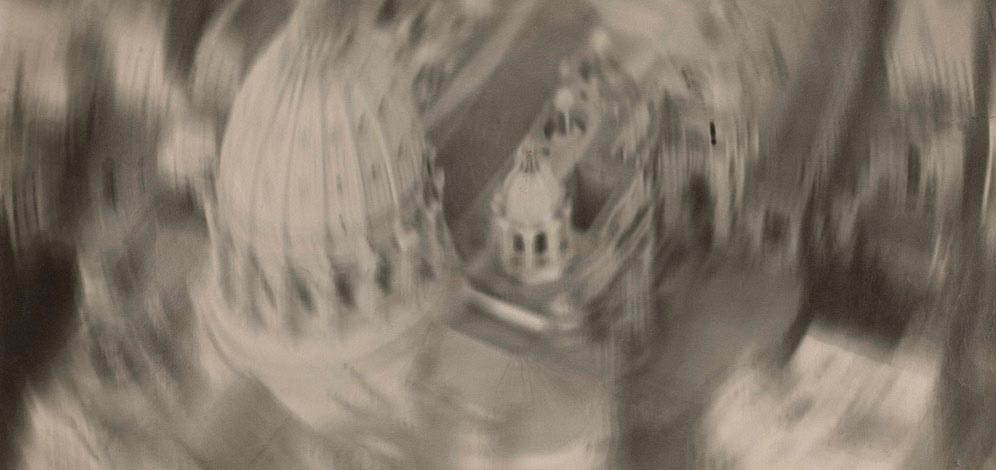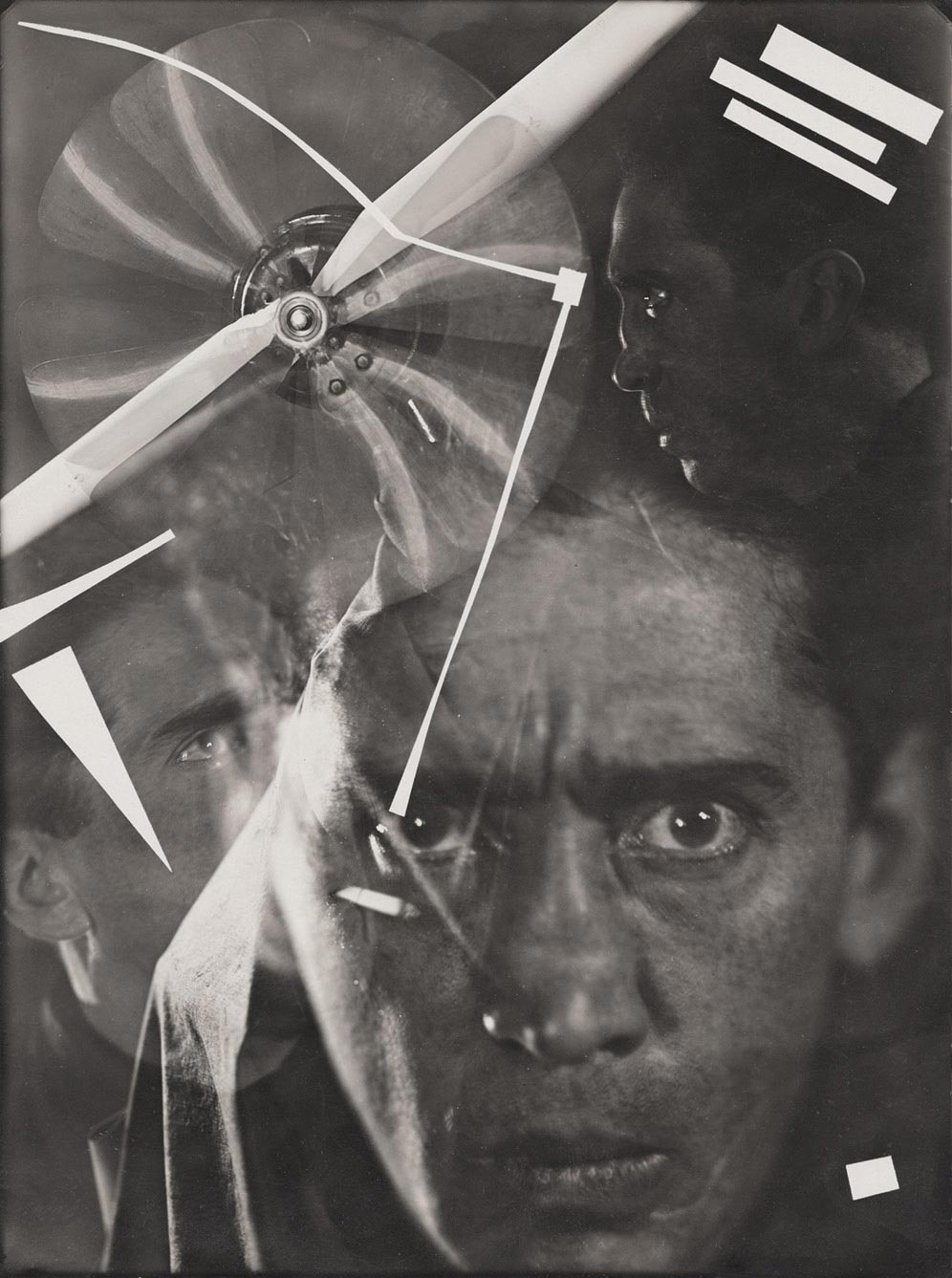Inspired by Henri Bergson’s philosophical ideas on dynamic movement, in late 1911 the Futurist painters began to freely adapt the photographic motion studies of French biophysicist Etienne-Jules Marey and Anglo-American photographer Eadweard Muybridge. Seeking to revitalize painting, Futurist Anton Giulio Bragaglia worked with his brother Arturo Bragaglia, an accomplished photographer, to develop a method of capturing movement they called photodynamism. The pictures on which the Bragaglia brothers collaborated plot the movement of a figure, usually from right to left, with intermediary sections of motion blurred.
Despite their proclaimed interest in new technologies, the Futurists largely neglected photography after these early experiments until the 1930s. In the 1930 “Futurist Photography: Manifesto,” F. T. Marinetti and Tato declared photography to be a powerful tool in the Futurist effort to eliminate barriers between art and life. With the camera, they could explore both “pure” art and art’s social function. Also a designer, graphic artist, and painter, Tato was a leader in Futurist photography and used the camera for diametrically opposed goals; his works express his ideological support of the Fascist regime and reflect his engagement with the absurd.
Futurist photography exhibitions of the 1930s presented avant-garde images that not only reveal an awareness of international modernist currents but also demonstrate strategies specific to the Italians. Futurist photographic techniques include the layering of multiple negatives, perspectival foreshortening, and photomontage. While the 1930s exhibitions included photographs by Bragaglia, the manifesto suggested that the newer photographers’ superimpositions achieved a simultaneous representation of time and space that moved beyond Bragaglia’s photodynamism.
The 1930s also saw the merging of photographic technology with other Futurist art forms, especially dance, painting, and performance inspired by mechanized flight. Meanwhile, photographers Filippo Masoero and Barbara developed novel conceptions of space by photographing Italian cities from an airplane’s cockpit.
Please note that Annex Levels 5 and 7 (see Museum Map), which contain Benedetta's murals and major works by Giacomo Balla and Fortunato Depero, close August 20.

